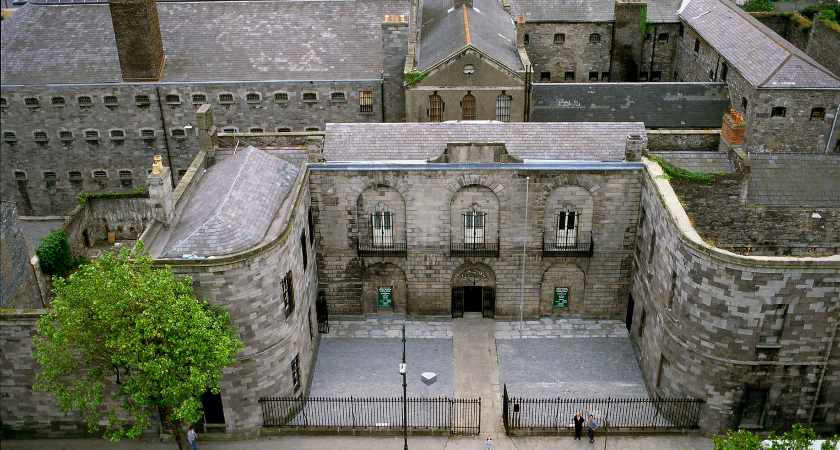EVERYBODY KNOWS the song, and most know the story which inspired it-- but who was the woman behind the it?
As many people know, the heart wrenching-ballad Grace tells the true story of Grace Gifford and Joseph Plunkett, who were married in Kilmainham Gaol hours before he was executed by firing squad for his role in the Easter Rising of 1916.
"Oh Grace just hold me in your arms and let this moment linger
They'll take me out at dawn and I will die
With all my love I place this wedding ring upon your finger
There won't be time to share our love for we must say goodbye."
The cherished Irish song was originally written in 1985 by Frank and Séan O'Meara, and has been performed many times and by many people over the years, including by Rod Stewart-- who once visited Grace's grave to lay flowers-- but it is the Wolfe Tones' version which is arguably the best-known.
But what of the woman herself, who is buried in Glasnevin cemetery close to her husband's final resting place? How did she find herself at the centre of the struggle for Ireland's independence?
Who was Grace Gifford Plunkett?
 Grace Gifford, painted by artist William Orpen
Grace Gifford, painted by artist William OrpenGrace Gifford was born in Dublin to a Protestant mother and Catholic father in 1888, 28 years before the failed rising at the GPO which would inspire Ireland to finally break free of the British Empire.
A talented artist, whose work focused on cartoons, Grace was active in the Republican movement despite being raised Protestant and living an affluent childhood. She is known to have had a deep interest in Catholicism-- which was exacerbated when she met her future husband, Joseph Plunkett.
Grace met her future husband through her brother-in-law Thomas MacDonagh, another future martyr for Irish freedom, who was married to her sister Muriel.
Grace studied and was indoctrinated into the Catholic church after Joseph proposed to her in 1915-- the pair planned a double wedding with his sister and her fiancé, and the wedding date was set for Easter Sunday, 1916.
But instead, the failed uprising, now known as the Easter Rising of 1916, took place, and Joseph was captured and imprisoned in Dublin's Kilmainham Gaol along with the other leaders, including Thomas MacDonagh.
What is the story behind the song 'Grace'?
Hearing that her fiancé was to be executed by firing squad at dawn, Grace bought a ring from a Dublin jewelers and pleaded with the military authorities to allow their wedding to take place.
As the famous song goes, Grace and Joseph were married on the grounds of the prison, hours before Joseph Plunkett was executed for his role in the Easter Rising.
 KIlmainham Gaol, where Joseph Plunkett was executed for his role in the Easter Rising
KIlmainham Gaol, where Joseph Plunkett was executed for his role in the Easter RisingWhat happened to Grace Gifford Plunkett after Joseph Plunkett was executed?
Struggling for money and for housing, with just her cartoons to sell to make a meagre wage, the chance of financial security was withheld by her in-laws, who denied her husband's will, which stated that all of his money be left to her, as it contained only one witness' signature.
Joseph Plunkett, in his final letter to his soon-to-be-widow, had requested that she fight for the money as it was rightfully hers-- and after a number of years, Joseph's parents agreed to pay her a sum of money, and she also received a Civil Pension from Éamon DeValera's government in 1932, allowing her to live the rest of her days in relative security.
Where is Grace Gifford Plunkett buried?
Grace Gifford-Plunkett died in 1955 at the age of 67, and was buried with full military honours, close to her husband's final resting place in Glasnevin Cemetery.
Her grave continues to receive countless visitors each year, many who were moved by the song which put music to Joseph Plunkett's last thoughts.

